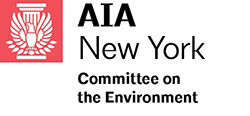Friday February 21st, 2020
1:00 pm to 5:00 pm
Thermal bridging from concrete or metal elements such as steel studs or concrete balconies can significantly reduce the effectiveness of insulation, create cold surfaces where mold can grow, and can significantly reduce the lifespan of finishes. In high performance buildings in particular the mitigation of thermal bridges is vital and primarily the responsibility of the architectural team.
Increasingly, building codes are also requiring that designers incorporate a quantification of these thermal bridges into their energy modeling and accounting when seeking approvals. Understanding thermal bridges and their effects is fast becoming a critical skill for any designer working on the building envelope.
This half-day session will build on the concepts covered in Thermal Bridge Modeling for Architects Part 1. All participants should have a working knowledge of the THERM program and have THERM successfully installed on their computers if they wish to follow along in class. This class will focus on special topics, including the use of THERM to calculate ground-contact Psi-Values, and the use of THERM to calculate condensation risk factors (fRsi).
Speaker:
Ed May, LEED Green Associate, Partner, BUILDING-TYPE, LLC
Other workshops in this series:
10/25/2019 – Thermal Bridge Modeling for Architects
01/24/2020 – Thermal Bridge Modeling for Architects: Psi Values
